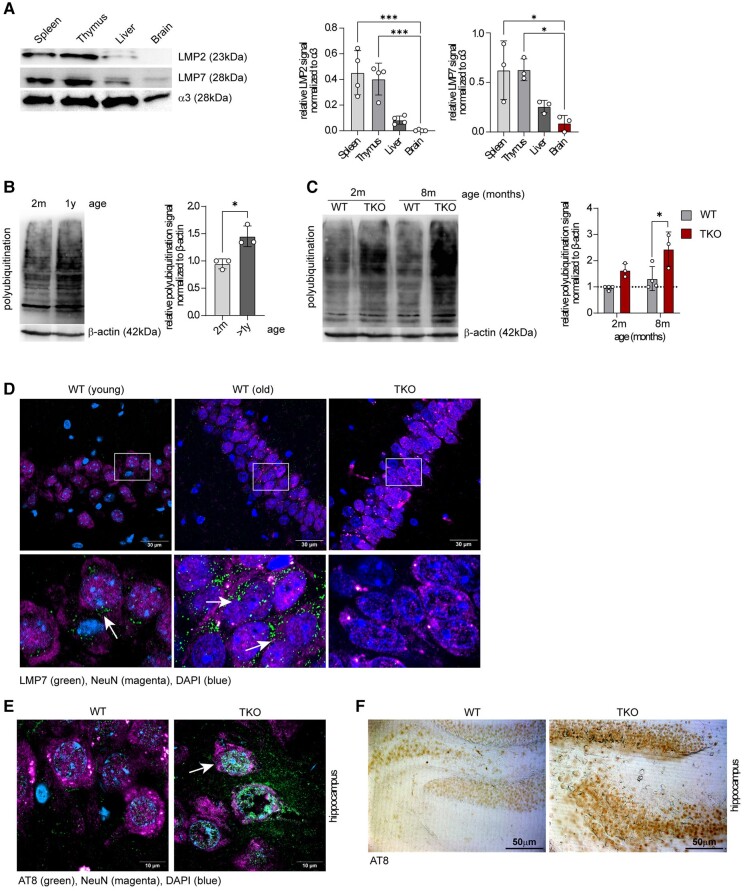Figure 1.
Immunoproteasome expression in the brains of young and old mice. (A) A western blot analysis of immunoproteasome distribution in the spleen, thymus, liver and brain of 2-month-old female WT mice. A representative western blot is shown (left side). The bar graphs display a relative abundance of low-molecular-weight protein 2 (LMP2) and low-molecular-weight protein 7 (LMP7) normalized to the proteasome subunit α3 (n = 3–4). The statistical analysis was performed by using one-way ANOVA. Data are presented as mean ± SD, *P = 0.01–0.05, ***P < 0.001. Uncropped blots are shown in Supplementary Fig. 6. (B) A western blot of polyubiquitination in the hippocampi of 2-month-old and 1-year-old female WT mice. A representative western blot is shown (left side), and the bar graphs display a relative polyubiquitin signal normalized to β-actin (n = 3). The statistical analysis was performed by using an unpaired t-test. Data are presented as mean ± SD, *P = 0.01–0.05. (C) A western blot of 2- and 8-month-old female WT and TKO mice displays an increase in the polyubiquitination of TKO hippocampi compared with WT hippocampi. A representative western blot is shown. The bar graphs display polyubiquitination levels normalized to β-actin (n = 3–4). Statistical significance for (B) and (C) was analysed by using an unpaired t-test. Data are presented as mean ± SD, *P = 0.01–0.05. Uncropped blots are shown in Supplementary Fig. 6. (D) A fluorescence staining of LMP7 (green) and NeuN (magenta, a neuronal marker) in the brains of young and old WT mice. A staining of the brains of old TKO mice is shown as a negative control. (E) A fluorescence staining of phospho-tau (AT8 = green, white arrows) in the CA3 region of the brains of WT versus TKO mice. The neuronal nuclear protein (NeuN, magenta) serves as a neuronal marker, and DAPI (blue) stains the nuclei. (F) A diaminobenzidine staining of phospho-tau (AT8) in the hippocampi of old WT and TKO mice (CA1).

